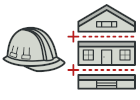
Ruby 生成器模式讲解和代码示例
生成器是一种创建型设计模式, 使你能够分步骤创建复杂对象。
与其他创建型模式不同, 生成器不要求产品拥有通用接口。 这使得用相同的创建过程生成不同的产品成为可能。
复杂度:
流行度:
使用示例: 生成器模式是 Ruby 世界中的一个著名模式。 当你需要创建一个可能有许多配置选项的对象时, 该模式会特别有用。
识别方法: 生成器模式可以通过类来识别, 它拥有一个构建方法和多个配置结果对象的方法。 生成器方法通常支持方法链 (例如 someBuilder.setValueA(1).setValueB(2).create())。
概念示例
本例说明了生成器设计模式的结构并重点回答了下面的问题:
- 它由哪些类组成?
- 这些类扮演了哪些角色?
- 模式中的各个元素会以何种方式相互关联?
main.rb: 概念示例
# The Builder interface specifies methods for creating the different parts of # the Product objects. class Builder # @abstract def produce_part_a raise NotImplementedError, "#{self.class} has not implemented method '#{__method__}'" end # @abstract def produce_part_b raise NotImplementedError, "#{self.class} has not implemented method '#{__method__}'" end # @abstract def produce_part_c raise NotImplementedError, "#{self.class} has not implemented method '#{__method__}'" end end # The Concrete Builder classes follow the Builder interface and provide specific # implementations of the building steps. Your program may have several # variations of Builders, implemented differently. class ConcreteBuilder1 < Builder # A fresh builder instance should contain a blank product object, which is # used in further assembly. def initialize reset end def reset @product = Product1.new end # Concrete Builders are supposed to provide their own methods for retrieving # results. That's because various types of builders may create entirely # different products that don't follow the same interface. Therefore, such # methods cannot be declared in the base Builder interface (at least in a # statically typed programming language). # # Usually, after returning the end result to the client, a builder instance is # expected to be ready to start producing another product. That's why it's a # usual practice to call the reset method at the end of the `getProduct` # method body. However, this behavior is not mandatory, and you can make your # builders wait for an explicit reset call from the client code before # disposing of the previous result. def product product = @product reset product end def produce_part_a @product.add('PartA1') end def produce_part_b @product.add('PartB1') end def produce_part_c @product.add('PartC1') end end # It makes sense to use the Builder pattern only when your products are quite # complex and require extensive configuration. # # Unlike in other creational patterns, different concrete builders can produce # unrelated products. In other words, results of various builders may not always # follow the same interface. class Product1 def initialize @parts = [] end # @param [String] part def add(part) @parts << part end def list_parts print "Product parts: #{@parts.join(', ')}" end end # The Director is only responsible for executing the building steps in a # particular sequence. It is helpful when producing products according to a # specific order or configuration. Strictly speaking, the Director class is # optional, since the client can control builders directly. class Director # @return [Builder] attr_accessor :builder def initialize @builder = nil end # The Director works with any builder instance that the client code passes to # it. This way, the client code may alter the final type of the newly # assembled product. def builder=(builder) @builder = builder end # The Director can construct several product variations using the same # building steps. def build_minimal_viable_product @builder.produce_part_a end def build_full_featured_product @builder.produce_part_a @builder.produce_part_b @builder.produce_part_c end end # The client code creates a builder object, passes it to the director and then # initiates the construction process. The end result is retrieved from the # builder object. director = Director.new builder = ConcreteBuilder1.new director.builder = builder puts 'Standard basic product: ' director.build_minimal_viable_product builder.product.list_parts puts "\n\n" puts 'Standard full featured product: ' director.build_full_featured_product builder.product.list_parts puts "\n\n" # Remember, the Builder pattern can be used without a Director class. puts 'Custom product: ' builder.produce_part_a builder.produce_part_b builder.product.list_parts output.txt: 执行结果
Standard basic product: Product parts: PartA1 Standard full featured product: Product parts: PartA1, PartB1, PartC1 Custom product: Product parts: PartA1, PartB1 


